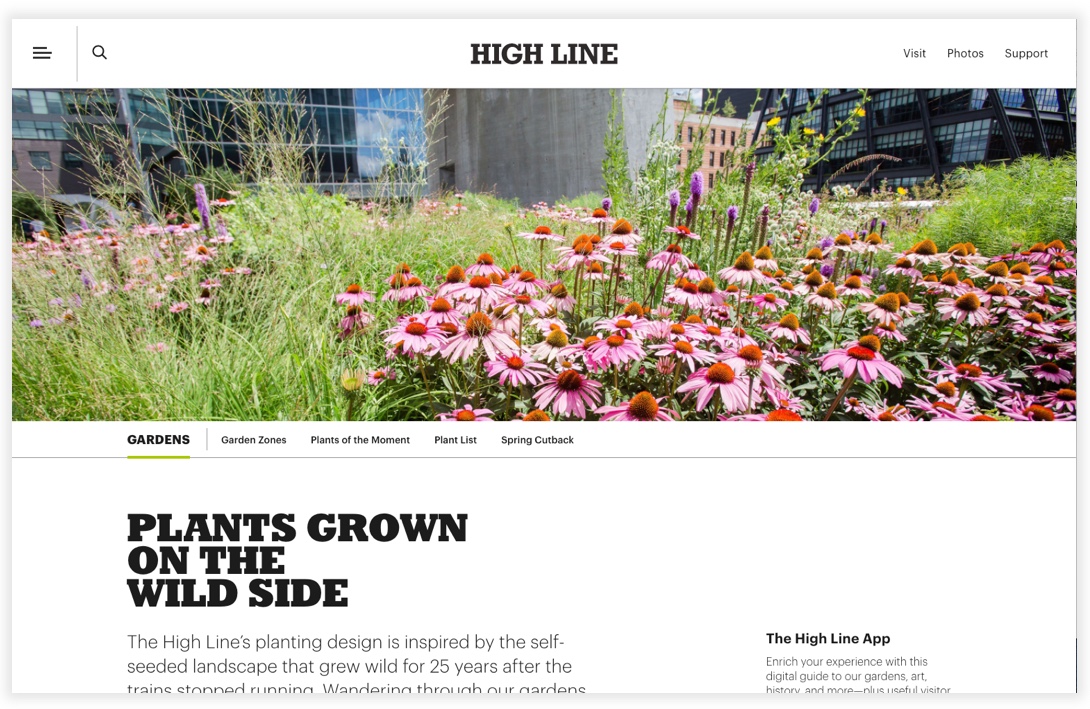
A Beginner's Guide to Sourcing and Using Stock Imagery
Photography is one of the best investments you can make for your web presence.
Assuming a client already has a well-built and well-designed website, photography is my top suggestion for clients looking to take their website the extra mile.
Stellar photography delivers on multiple fronts. Images grab users’ attention, provide context for written content, and engage customers for an improved user experience. Photography can also be leveraged across multiple mediums, from web to print to social.
When I refer to stock imagery, I mean images purchased online. The alternative would be custom photography, either DIY images the client takes themselves or professional photography they’ve hired out. Before I dive into best practices for stock imagery, I want to be clear. Prioritize custom photography whenever you can.

Authenticity is key to great content, and nothing is more authentic than an image of your product, your team, and your community.
But as in any industry, professional services come at extra cost. The reality for many of our clients is that time and money are too limited for custom photography and stock images are the next-best thing. So if you choose to go this route, here are a few tips for sourcing and implementing stock imagery on your site.
First, understand these three sources for stock imagery.
Traditional stock image sites. These include Shutterstock, iStock, and Adobe Stock. On these sites, you can search thousands of images, download watermarked versions to test, and purchase downloads at a variety of sizes. Some sites are subscription based; meaning users pay monthly for a capped number of downloads. You can also pay per download. Tip: Traditional stock imagery sites are your best bet for industry-specific images or images with models.

Free stock image sites. Examples are Unsplash and Pexels. Make sure you read the fine print, because many require crediting the photographer. Tip: This is a great source for lifestyle images.

Archive sites. These include library and university archives, such as the Library of Congress. Many of these are copyrighted images where the copyrights have expired (typically, after 70 years). When a copyright expires, the images are then available for free in the public domain. Tip: Another way to find images like this is searching Flickr with the “No known copyright restrictions” filter turned on.

Avoid using a mix of filters and styles.
Some photographers differentiate their work with the use of applied filters and distinct styles. For example, one photographer might tend towards cool tones while another tends towards warm tones. Consider how stock images will look in the context of your site and any of your existing photography. You don’t want images to appear inconsistent across your brand. Tip: Once you find an image you like, try searching for complementary images by checking out the photographer’s full portfolio.



Avoid dated photography.
Sometimes these photos give themselves away, but you can also check the copyright or upload dates. Tip: Avoid details that will date your images, like fashion trends and tech devices.

Think about placement and cropping.
Let’s say you want to use a square image somewhere on your website. You don’t necessarily need the image you purchase to have a square ratio, but you need to test whether that image will work within that crop (similar to a profile picture). Another frequent scenario is sourcing photography for a hero image or for the top of a landing page. Both of these examples are usually cropped to a landscape orientation, so a portrait-oriented image wouldn’t work. Tip: Search images by landscape or portrait orientation.

Prioritize “textural” images.
In my experience, this is the most flexible kind of stock imagery. Textural images can be used in a number of places, cropped to various ratios, and are always easier to display type on top of. What do I mean by “textural” images? I made it up for this post, and it’s pretty hard to define. For me, it’s any image that’s well-balanced, but lacking a strong focal point (like a person’s face). This could be an actual texture, like the close-up of the leaf, below. Or it could be an abstract image. Or even something repetitious and pattern-like. For me, these images are like B-roll in film. Tip: Ask yourself (or test) whether an image would crop well in a landscape crop, portrait crop, and square crop. If it crops well in all three, it probably falls into this category.

White space is king.
These images are different from the previous examples because they do feature strong focal points, a cocktail glass and a woman, respectively. However, these are also great examples of images with white space. I might also refer to white space as “empty space” or “breathing room” where the details of the image are minimal or blurred, without a lot of noise or visual interest. This is ideal placement for text. Tip: If you’re handy with Photoshop, you can sometimes create extra white space using Content-Aware Fill.


Don’t purchase low-res images to use for print.
If you’re only using stock imagery on your website, you can often get away with more affordable images at 72 dpi. However, if you plan to use that image anywhere in print collateral, you’ll need to purchase the image with a resolution of 300 dpi.

Avoid clichés.
Here are a few of things that give stock imagery a bad rep, with examples below:
- Cheesy group photos
- Photos that are trying to hard too communicate multiple things (often collaged or layered images)
- Word clouds
- Scenarios that seem posed or awkward
- Weird vectors or backgrounds
- Anything overly Photoshopped or obviously 3D-rendered
Tip: Don’t rely on stock imagery to communicate company values or complex ideas. Use written copy to do that heavy lifting.

Our three biggest take-aways are to prioritize imagery that is consistent with your brand, to plan photography strategically (with filters, cropping, and resolution in mind), and to consider whether your stock imagery will resonate with your desired audience. Please don’t hesitate to contact us with any questions on sourcing stock imagery, and we hope these best practices serve you well!
Featured Image Credit: Pixabay, Kaboombpics.com, Pixabay, and Conrad Marshall, via Pexels